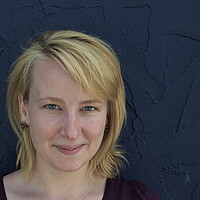New York train crash engineer says he 'lost focus.' But why?
Loading...
The National Transportation Safety Board has begun piecing together what happened when a Metro-North commuter train derailed in New York City and nearly plunged into the Harlem River early Sunday morning.
The events leading up to the crash suggest that human error was at play, says Peter Goelz, a former NTSB managing director and a current senior vice president at O’Neill and Associates, a lobbying group.
“Trains are not particularly complex pieces of machinery when you, say, compare them to an airplane,” says Mr. Goelz, who is not involved in the investigation. The braking systems on trains are redundant: If you lose your brakes on one set of cars, another set can always kick in, he says.
The NTSB announced Monday that the Metro-North train was hurtling through a designated “slow zone” at 82 m.p.h.– almost three times the recommended speed limit – right before it derailed. Approximately six seconds before the rear engine came to a stop, the throttle went idle. One second later, pressure in the brake pipe dropped to zero, resulting in max braking. The brakes, however, did not kick in in time to stop the cars from hurtling over the tracks.
What is so perplexing, says Goelz, is how a seasoned train operator like William Rockefeller, who has been a Metro-North train engineer for 15 years, failed to activate the brakes in time in a curve he had made countless times.
Mr. Rockefeller told investigators that he "lost focus" and went into a daze shortly before the crash, Reuters reports.
When looking at human factors – such as driver error – in transportation accidents, there are two main things that the NTSB will likely take into account: fatigue and distractions.
The Federal Railroad Administration instituted new regulations on working hours in April 2012 to “minimize the fatigue factor,” tightening up the number of hours and days commuter-rail employees can work.
As of last April, workers on Type II shifts from midnight to 4 a.m., and who work more than six days in a row, are required to take 24 hours off. Workers who clock in during the day for Type I shifts are required to take two days off every 14th day. All workers are not allowed to work longer than 10 hours per day.
Rockefeller’s train would have left the station at 5:54 a.m., meaning that he would have just missed the Type II time cutoff that requires stricter rules for taking rest days.
The driver’s cellphone was found in the debris, though investigators have not yet established if the conductor was using his phone around the time of the accident. Metro-North employees are allowed to have cellphones while driving, they are just not allowed to use them.
Rockefeller was injured in the crash and “is totally traumatized by everything that has happened,” said Anthony Bottalico, executive director of the rail employees’ union. Rockefeller is “a sincere human being with an impeccable record, that I know of. He’s diligent and competent,” Mr. Bottalico noted.
The NTSB’s team is still in the process of interviewing Rockefeller, as well as three other employees who were on board at the time, said NTSB member Earl Weener during a press conference Monday. Mr. Weener said it was too early to know to what degree the accident was caused by human or mechanical error.
The deaths of four passengers in Sunday's derailment are the first in an accident in the 31-year history of the Metropolitan Transportation Authority. More than 60 commuters were injured in the accident.
This is the second crash in the past six months on this section of tracks where the Hudson and Harlem Rivers meet in the Bronx. In July, a CSX freight train carrying tons of garbage derailed. The area is a slow zone because of two tight curves that come in quick succession. In the area, the speed limit drops from 70 m.p.h. to 30 m.p.h.
The NTSB has been urging railroads for decades to install technology that can stop high-speed derailments. A 2008 law requires commuter and freight railroads to install Positive Train Control (PTC) safety systems by 2015. Metro-North is in the process of installing the technology.
Editor's Note: The original version of this story misidentified the river into which the derailed Metro-North nearly fell. It was the Harlem River, not the Hudson.







